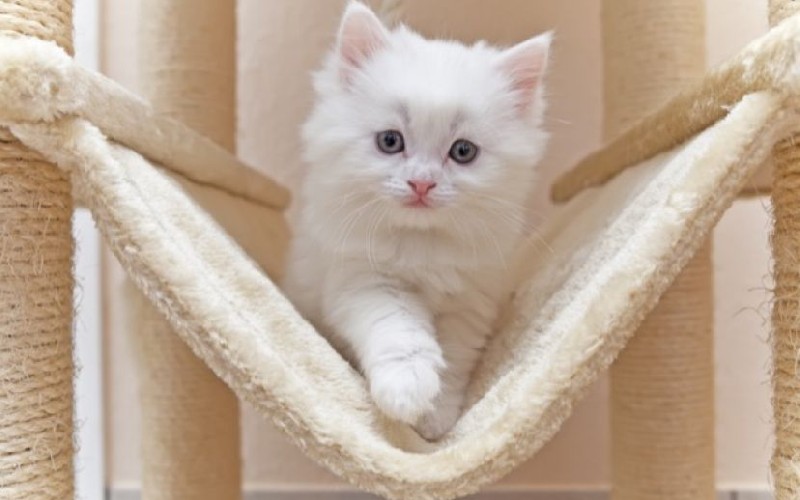
Environmental enrichment for cats
The Cat’s well-beingTo improve a cat’s quality of life, we can enrich the surrounding environment to meet the kitten’s unique needs. The cat, just like all animals, has primary needs (eating, drinking, resting, urinating, defecating and mating) and behavioral needs typical of the cat such as searching, exploring, climbing and observing the world from above, playing, trimming the nails. The kitten also needs to have everything properly arranged (food, water, resting places, boxes, scratchers and toys) and expanding the available space inside the house is the key to achieving this goal.
What supplies does a new kitten need
Up to the age of 4-5 months, food, water, the litter box, the beds, the scratcher and the toys must be placed in the same room so that the kitten has everything within easy reach. Later, when the kitten becomes a young adult, the needs change: the cat prefers to have these resources spread out and far from each other according to a pattern that recalls what would happen in nature. Here's what to do:
- Food: the cat eats during the day and night and can even reach up to 15-16 small meals in a day. The entire daily dose of dry food must be left available by giving the kitten a few teaspoons of wet food at family meals. I recommend using ceramic bowls as this material better preserves the taste of the food.
- Water: water must always be fresh and abundant. Since many cats like to drink from faucets, it is possible to set up a ceramic water fountain in addition to the classic bowl.
- The Litter Boxes: Since the cat prefers to eliminate in complete tranquility, I recommend placing the box in a secluded place in the house and away from high traffic areas. The box should have edges 4-5 cm high so that the kitten can have easy access. Kittens prefer a litter with medium-sized granules, without artificial scents, not very dusty, and with good clumping capability. The dirty part of the litter box should be removed at least twice a day as the kitten greatly prefers to use a clean bathroom.
- Places to rest: From the very beginning of the kittens' new life at home, they must sleep close to the Pet Parent at night in order to feel welcomed and protected. The kitten does not rest for long periods in the same place and tends to change spots frequently. To create an ideal resting area, it is advisable to place particularly comfortable substrates (such as bunks, soft cushions or fleece covers) in hidden places or in plain sight, at floor level (such as the walk-in closet, the lower shelves of a bookcase or under the bed) or high up (such as chairs or the sofa).
- Scratchers: To preserve the furniture, it is advisable to have at least two vertical scratchers in the home. The cat usually prefers vertical scratchers over horizontal ones. By scratching, the kitten naturally leaves the marks left by the nails and the interdigital pheromones to testify its presence near its favorite resting places and passageways (such as the front door and the balcony). The cat's favorite materials are sisal and cardboard. Since the kitten is still inexperienced in jumping and climbing, I recommend buying a scratcher no more than 1m high. To expand the space available in the home for the kitten, I recommend placing a vertical scratcher with multiple posts at least 1.5m high near a window so that the kitten, once it has become an adult, can scratch, climb and observe the world while it rests.
- Toys: balls, objects covered with fabric or feathers allow the little kitten to practice and stimulate its hunting instincts. Toys need to be placed in a container such as a cardboard box.
Expanding the available surface increases the cat's ability to express its typical natural behaviors such as climbing up, hiding, mimicking an ambush, running and playing. There are numerous furniture components that we can buy so that the kitten can fully integrates within the new home. You can set up shelves, Tibetan bridges and hiding places connected to each other, poles covered with sisal, or even hammocks hanging from radiators. These elements must first be placed at a reduced height since the kitten could fall. It is advisable to cover shelves, walkways and steps with non-slip material (for example the carpet) so that the little feline can walk easily. Balconies and terraces allow the kitten to stay outdoors, sunbathe, catch small insects (especially during sunrise and sunset) and spend part of the day observing the outside world around them. To avoid accidents, the outdoor area should be made as safe as possible and always accessible by using cat flaps.

